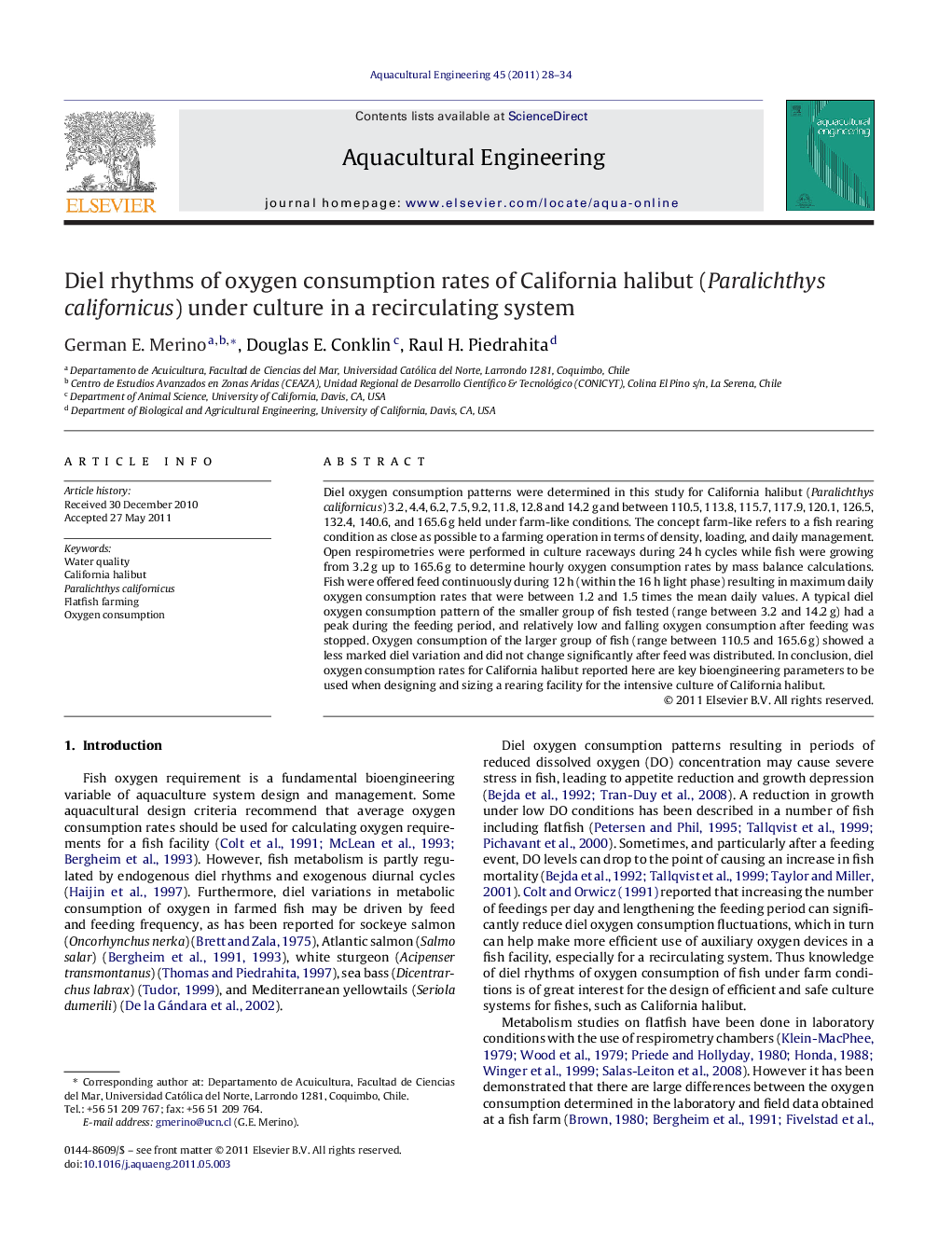| Article ID | Journal | Published Year | Pages | File Type |
|---|---|---|---|---|
| 4527348 | Aquacultural Engineering | 2011 | 7 Pages |
Diel oxygen consumption patterns were determined in this study for California halibut (Paralichthys californicus) 3.2, 4.4, 6.2, 7.5, 9.2, 11.8, 12.8 and 14.2 g and between 110.5, 113.8, 115.7, 117.9, 120.1, 126.5, 132.4, 140.6, and 165.6 g held under farm-like conditions. The concept farm-like refers to a fish rearing condition as close as possible to a farming operation in terms of density, loading, and daily management. Open respirometries were performed in culture raceways during 24 h cycles while fish were growing from 3.2 g up to 165.6 g to determine hourly oxygen consumption rates by mass balance calculations. Fish were offered feed continuously during 12 h (within the 16 h light phase) resulting in maximum daily oxygen consumption rates that were between 1.2 and 1.5 times the mean daily values. A typical diel oxygen consumption pattern of the smaller group of fish tested (range between 3.2 and 14.2 g) had a peak during the feeding period, and relatively low and falling oxygen consumption after feeding was stopped. Oxygen consumption of the larger group of fish (range between 110.5 and 165.6 g) showed a less marked diel variation and did not change significantly after feed was distributed. In conclusion, diel oxygen consumption rates for California halibut reported here are key bioengineering parameters to be used when designing and sizing a rearing facility for the intensive culture of California halibut.
► Diel oxygen patterns were determined for P. californicus under farm conditions. ► Maximum oxygen consumption rates were 1.2 and 1.5 times the mean daily values. ► Diel oxygen patterns are a valuable insight for P. californicus under farm conditions.
